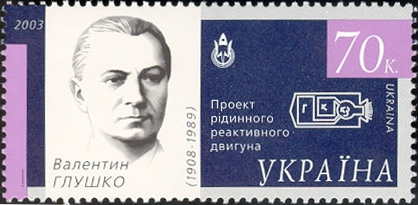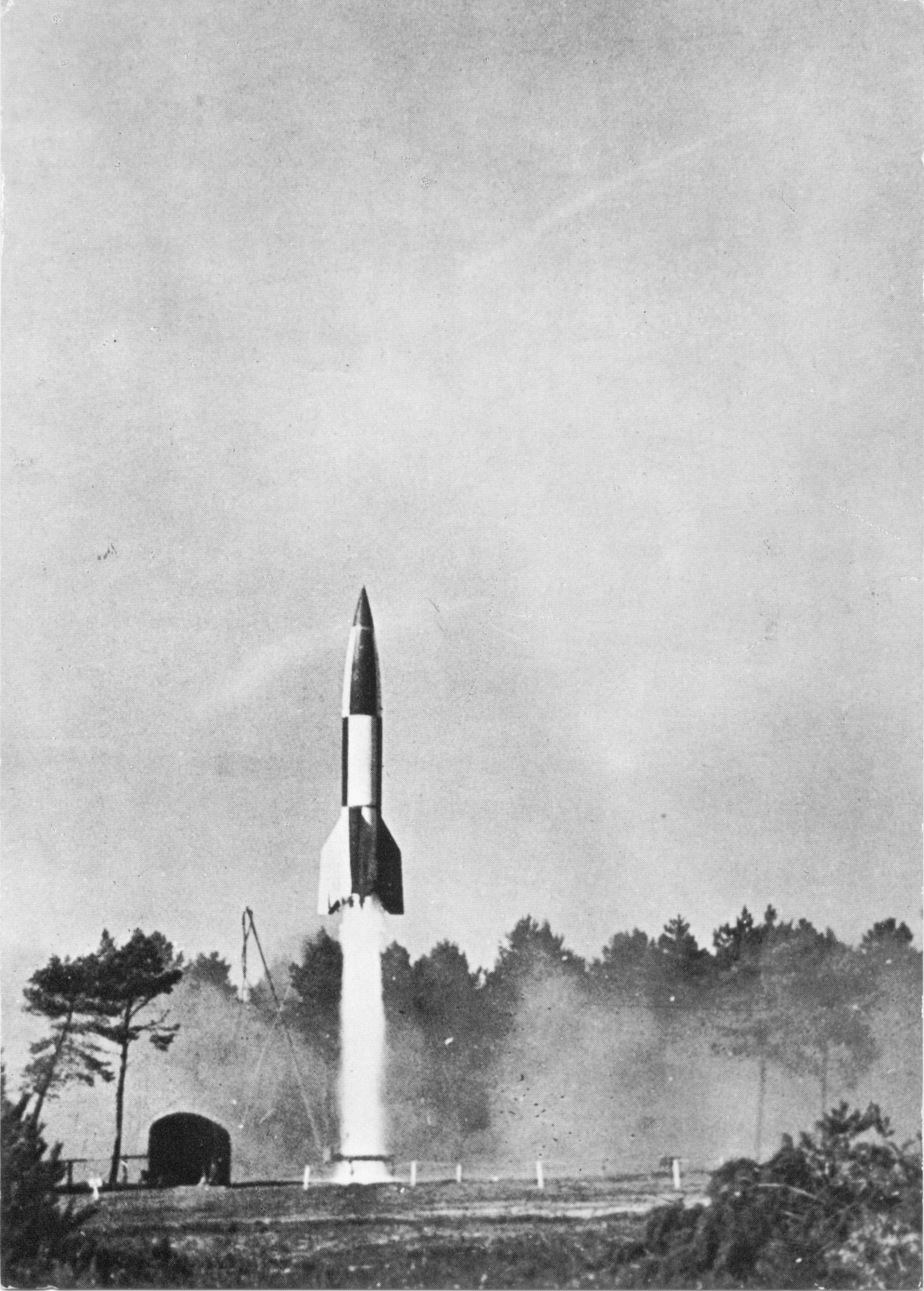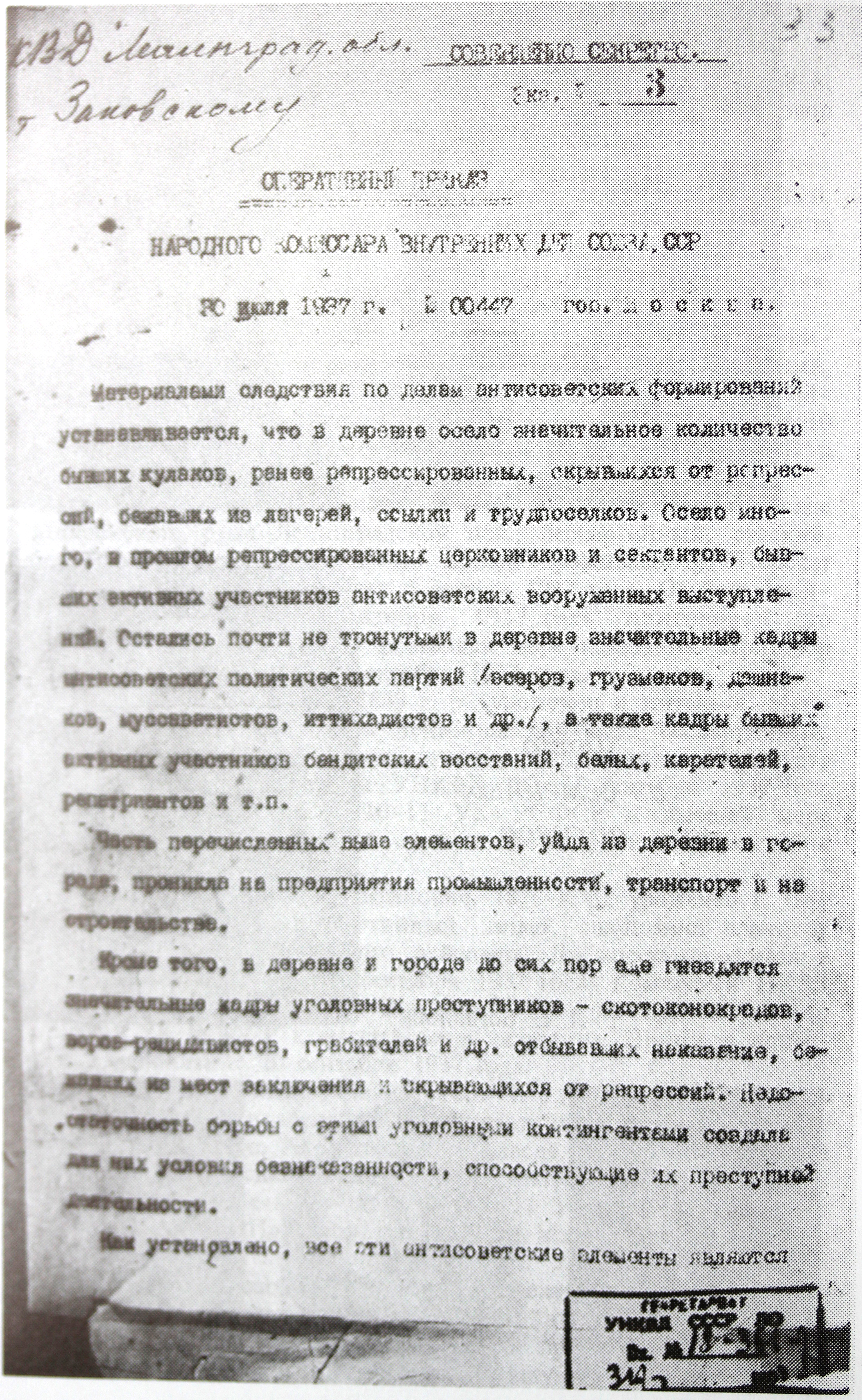|
Valentin Glushko
Valentin Petrovich Glushko (russian: Валенти́н Петро́вич Глушко́; uk, Валентин Петрович Глушко, Valentyn Petrovych Hlushko; born 2 September 1908 – 10 January 1989) was a Soviet engineer and the main designer of rocket engines in the Soviet space program during the heights of the Space Race between United States and the Soviet Union. Biography At the age of fourteen he became interested in aeronautics after reading novels by Jules Verne. He is known to have written a letter to Konstantin Tsiolkovsky in 1923. He studied at an Odessa trade school, where he learned to be a sheet metal worker. After graduation he apprenticed at a hydraulics fitting plant. He was first trained as a fitter, then moved to lathe operator. During his time in Odessa, Glushko performed experiments with explosives. These were recovered from unexploded artillery shells that had been left behind by the White Guards during their retreat. From 1924 to 1925 he wro ... [...More Info...] [...Related Items...] OR: [Wikipedia] [Google] [Baidu] |
Odessa
Odesa (also spelled Odessa) is the third most populous city and municipality in Ukraine and a major seaport and transport hub located in the south-west of the country, on the northwestern shore of the Black Sea. The city is also the administrative centre of the Odesa Raion and Odesa Oblast, as well as a multiethnic cultural centre. As of January 2021 Odesa's population was approximately In classical antiquity a large Greek settlement existed at its location. The first chronicle mention of the Slavic settlement-port of Kotsiubijiv, which was part of the Grand Duchy of Lithuania, dates back to 1415, when a ship was sent from here to Constantinople by sea. After a period of Lithuanian Grand Duchy control, the port and its surroundings became part of the domain of the Ottomans in 1529, under the name Hacibey, and remained there until the empire's defeat in the Russo-Turkish War of 1792. In 1794, the modern city of Odesa was founded by a decree of the Russian empress Catherine t ... [...More Info...] [...Related Items...] OR: [Wikipedia] [Google] [Baidu] |
Gas Dynamics Laboratory
Gas Dynamics Laboratory (GDL) (russian: Газодинамическая лаборатория) was the first Soviet research and development laboratory to focus on rocket technology. Its activities were initially devoted to the development of solid propellant rockets, which became the prototypes of missiles in the Katyusha rocket launcher, as well as liquid propellant rockets, which became the prototypes of Soviet rockets and spacecraft. At the end of 1933 it became part of the Reactive Scientific Research Institute (RNII). A number of craters on the far side of the Moon are named after GDL employees. History of the organization * First rocket research and development organization in the USSR.heading=Gas-Dynamic Laboratory * Created on 1 March 1921 in Moscow as the "Laboratory for the development of inventions by N. I. Tikhomirov" as part of the Main Artillery Directorate of the Red Army. * In 1928 the laboratory was relocated to Leningrad. * In July 1928, was renam ... [...More Info...] [...Related Items...] OR: [Wikipedia] [Google] [Baidu] |
NPO Energomash
NPO Energomash “V. P. Glushko” is a major Russian rocket engine manufacturer. The company primarily develops and produces liquid propellant rocket engines. Energomash originates from the Soviet design bureau OKB-456, which was founded in 1946. NPO Energomash acquired its current name on May 15, 1991, in honor of its former chief designer Valentin Glushko. Energomash is noted for its long history of large scale LOX/Kerosene engine development. Notable examples are the RD-107/ RD-108 engines used on the R-7, Molniya and Soyuz rocket families, and the RD-170, RD-171 and RD-180 engines used on the Energia, Zenit and Atlas V launch vehicles. , the company remained largely owned by the federal government of Russia, but RSC Energia owned approximately 14% of the total shares. , NPO Energomash employed approximately 5500 workers at its headquarters in Khimki, Moscow and its satellite facilities in Samara, Perm, and St. Petersburg. On 4 August 2016, the company announced ... [...More Info...] [...Related Items...] OR: [Wikipedia] [Google] [Baidu] |
Operation Backfire (World War II)
Operation Backfire was a military scientific operation during and after the World War II, Second World War that was performed mainly by British staff. The operation was designed to completely evaluate the entire V-2 rocket assembly, interrogate German personnel specialized in all phases of it and then to test and launch missiles across the North Sea. Background With the end of the war, the Allies' scrambled to acquire German technology. For their part, a number of operations were set by the British, with the Fedden Mission and Operation Surgeon. With the consent of U.S. General Dwight D. Eisenhower, the operation was orchestrated by Major Robert Staver from the Rocket Section of the Research and Development branch of the Ordnance Office that was tasked in directing the effort to find and interrogate the German rocket specialists who had built the V-2. Since April 30 he had been in the Nordhausen area searching the smaller laboratories for V-2 technicians. Auxiliary Territorial S ... [...More Info...] [...Related Items...] OR: [Wikipedia] [Google] [Baidu] |
World War II
World War II or the Second World War, often abbreviated as WWII or WW2, was a world war that lasted from 1939 to 1945. It involved the vast majority of the world's countries—including all of the great powers—forming two opposing military alliances: the Allies and the Axis powers. World War II was a total war that directly involved more than 100 million personnel from more than 30 countries. The major participants in the war threw their entire economic, industrial, and scientific capabilities behind the war effort, blurring the distinction between civilian and military resources. Aircraft played a major role in the conflict, enabling the strategic bombing of population centres and deploying the only two nuclear weapons ever used in war. World War II was by far the deadliest conflict in human history; it resulted in 70 to 85 million fatalities, mostly among civilians. Tens of millions died due to genocides (including the Holocaust), starvation, ma ... [...More Info...] [...Related Items...] OR: [Wikipedia] [Google] [Baidu] |
La-7
The Lavochkin La-7 (russian: Лавочкин Ла-7) was a piston-engined single-seat Soviet fighter aircraft developed during World War II by the Lavochkin Design Bureau. It was a development and refinement of the Lavochkin La-5, and the last in a family of aircraft that had begun with the LaGG-1 in 1938. Its first flight was in early 1944 and it entered service with the Soviet Air Forces later in the year. A small batch of La-7s was given to the Czechoslovak Air Force the following year, but it was otherwise not exported. Armed with two or three cannon, it had a top speed of . The La-7 was felt by its pilots to be at least the equal of any German piston-engined fighter. It was phased out in 1947 by the Soviet Air Force, but served until 1950 with the Czechoslovak Air Force. Design and development By 1943, the La-5 had become a mainstay of the Soviet Air Forces, yet both its head designer, Semyon Lavochkin, as well as the engineers at the Central Aerohydrodynamics Institu ... [...More Info...] [...Related Items...] OR: [Wikipedia] [Google] [Baidu] |
Lavochkin
NPO Lavochkin (russian: НПО Лавочкина, OKB-301, also called Lavochkin Research and Production Association or shortly Lavochkin Association, LA) is a Russian aerospace company. It is a major player in the Russian space program, being the developer and manufacturer of the Fregat upper stage, as well as interplanetary probes such as Fobos-Grunt. As of 2015, it was headed by Sergei Lemeshevskii. On August 10, 2017 the Lavochkin Association's Board of Directors appointed Vladimir Kolmykov Director General of the enterprise. Overview The company develops and manufactures spacecraft such as the Fregat rocket upper stages, satellites and interplanetary probes. It is a contractor for a number of military programs, such as the Oko early warning satellite, Prognoz and Araks programmes as well as the civilian program Kupon. One of the company's most notable projects was the participation in the failed Fobos-Grunt sample return mission. NPO Lavochkin has also developed the Elektr ... [...More Info...] [...Related Items...] OR: [Wikipedia] [Google] [Baidu] |
Sergei Korolev
Sergei Pavlovich Korolev (russian: Сергей Павлович Королёв, Sergey Pavlovich Korolyov, sʲɪrˈɡʲej ˈpavləvʲɪtɕ kərɐˈlʲɵf, Ru-Sergei Pavlovich Korolev.ogg; ukr, Сергій Павлович Корольов, Serhiy Pavlovych Korol'ov, sɛrˈɦij ˈpavlovɪtʃ koroˈlʲou̯) 14 January 1966) was a lead Soviet Aerospace engineering, rocket engineer and spacecraft designer during the Space Race between the United States and the Soviet Union in the 1950s and 1960s. He is regarded by many as the father of practical astronautics. He was involved in the development of the R-7 Semyorka, R-7 Rocket, Sputnik 1, launching Laika, Sputnik 3, the first luna 2, human-made object to make contact with another celestial body, Soviet space dogs#Belka and Strelka, Belka and Strelka, the first human being, Yuri Gagarin, into space, Voskhod 1, and the first person, Alexei Leonov, to conduct a Voskhod 2, spacewalk. Although Korolev trained as an aircraft designer, h ... [...More Info...] [...Related Items...] OR: [Wikipedia] [Google] [Baidu] |
Liquid Rocket
A liquid-propellant rocket or liquid rocket utilizes a rocket engine that uses liquid propellants. Liquids are desirable because they have a reasonably high density and high specific impulse (''I''sp). This allows the volume of the propellant tanks to be relatively low. It is also possible to use lightweight centrifugal turbopumps to pump the rocket propellant from the tanks into the combustion chamber, which means that the propellants can be kept under low pressure. This permits the use of low-mass propellant tanks that do not need to resist the high pressures needed to store significant amounts of gasses, resulting in a low mass ratio for the rocket. An inert gas stored in a tank at a high pressure is sometimes used instead of pumps in simpler small engines to force the propellants into the combustion chamber. These engines may have a higher mass ratio, but are usually more reliable, and are therefore used widely in satellites for orbit maintenance. Liquid rockets can be monop ... [...More Info...] [...Related Items...] OR: [Wikipedia] [Google] [Baidu] |
Butyrka Prison
Butyrskaya prison ( rus, Бутырская тюрьма, r= Butýrskaya tyurmá), usually known simply as Butyrka ( rus, Бутырка, p=bʊˈtɨrkə), is a prison in the Tverskoy District of central Moscow, Russia. In Imperial Russia it served as the central transit prison. During the Soviet Union era (1917-1991) it held many political prisoners. Butyrka remains the largest of Moscow's remand prisons. Overcrowding is an ongoing problem. History The first references to Butyrka prison may be traced back to the 17th century. The current building was erected in 1879 near the Butyrsk gate (, or Butyrskaya zastava) on the site of a prison-fortress which had been built by the architect Matvei Kazakov during the reign of Catherine the Great. The towers of the old fortress once housed the rebellious Streltsy during the reign of Peter I, and later on hundreds of participants of the 1863 January Uprising in Poland. Members of Narodnaya Volya were also prisoners of the Butyrka ... [...More Info...] [...Related Items...] OR: [Wikipedia] [Google] [Baidu] |
NKVD
The People's Commissariat for Internal Affairs (russian: Наро́дный комиссариа́т вну́тренних дел, Naródnyy komissariát vnútrennikh del, ), abbreviated NKVD ( ), was the interior ministry of the Soviet Union. Established in 1917 as NKVD of the Russian Soviet Federative Socialist Republic, the agency was originally tasked with conducting regular police work and overseeing the country's prisons and labor camps. It was disbanded in 1930, with its functions being dispersed among other agencies, only to be reinstated as an all-union commissariat in 1934. The functions of the OGPU (the secret police organization) were transferred to the NKVD around the year 1930, giving it a monopoly over law enforcement activities that lasted until the end of World War II. During this period, the NKVD included both ordinary public order activities, and secret police activities. The NKVD is known for its role in political repression and for carrying out the Great ... [...More Info...] [...Related Items...] OR: [Wikipedia] [Google] [Baidu] |
Great Purge
The Great Purge or the Great Terror (russian: Большой террор), also known as the Year of '37 (russian: 37-й год, translit=Tridtsat sedmoi god, label=none) and the Yezhovshchina ('period of Nikolay Yezhov, Yezhov'), was General Secretary of the Communist Party of the Soviet Union, Soviet General Secretary Joseph Stalin's campaign to solidify his power over the party and the state; the Purge, purges were also designed to remove the remaining influence of Leon Trotsky as well as other prominent political rivals within the party. It occurred from August 1936 to March 1938. Following the Death and state funeral of Vladimir Lenin, death of Vladimir Lenin in 1924 a power vacuum opened in the Communist Party of the Soviet Union, Communist Party. Various established figures in Lenin's government attempted to succeed him. Joseph Stalin, the party's General Secretary, outmaneuvered political opponents and ultimately gained control of the Communist Party by 1928. Initially ... [...More Info...] [...Related Items...] OR: [Wikipedia] [Google] [Baidu] |






.jpg)
.jpg)


